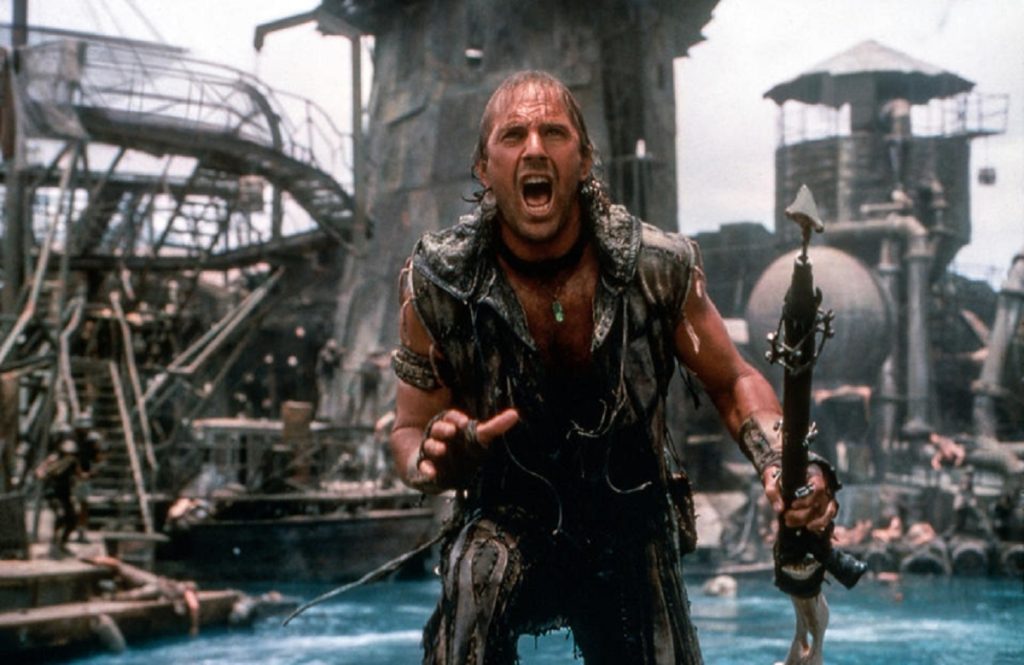When Waterworld hit theaters in 1995, it became infamous for its disastrous production and underwhelming financial return. But before filming even began, the ambitious project had the potential for greatness—had the filmmakers heeded the advice of one of Hollywood’s most successful directors. That director was none other than Steven Spielberg, whose advice could have saved the film from sinking.
Spielberg’s Warning: “Don’t Film on Water”

The making of Waterworld, which starred and was produced by Kevin Costner, was filled with trouble from the start. In 1994, eager to create a groundbreaking aquatic blockbuster, Costner reached out to Spielberg for guidance. Spielberg, who had famously endured a grueling production process on the set of Jaws, was an ideal consultant for a film that would rely heavily on ocean-based filming.
According to screenwriter Peter Rader, Costner asked Spielberg for tips on how to handle filming at sea. Spielberg’s response was blunt and clear: “Don’t film on water.” Having gone through the difficult process of shooting Jaws, where the original 50-day shoot stretched to 155 days, Spielberg had first-hand experience of how such a production could go awry. His advice? Use a second unit for a few necessary ocean shots, but do the bulk of filming in a controlled environment like a studio or water tank.
“Mad Max” on Water: A Grand Vision Gone Wrong
Despite Spielberg’s warning, Costner chose to ignore the advice. He was determined to bring his vision of Waterworld to life—one that mirrored the high-octane chaos of Mad Max, but set on the ocean. The film was intended to showcase thrilling water-based action sequences, and the choice to film on the open sea off the coast of Hawaii seemed promising at first.
However, as the production unfolded, ignoring Spielberg’s advice proved disastrous. Filming on the ocean led to a myriad of complications that ballooned the film’s budget. Originally estimated at $100 million, Waterworld’s final production cost ended up at a staggering $175 million, making it one of the most expensive films of its time.
A Costly Decision
The ocean set proved to be a logistical nightmare. Unpredictable weather conditions caused disastrous setbacks, including the complete sinking of one of the film’s massive sets, which had to be rebuilt. Constant waves and ocean movement made it nearly impossible for the filming team to get usable shots, and despite the stunning visuals that the ocean provided, the cost and chaos of filming in such an environment far outweighed the benefits.
While Spielberg’s experience with Jaws had led to an iconic classic, Waterworld barely scraped by with $264 million at the global box office—still a solid return, but not enough to cover its inflated budget. Unlike Jaws, which overcame its turbulent production to become a cult classic and a massive hit, Waterworld remains a cautionary tale of how things can go wrong when stubbornness outweighs experience.
The Takeaway: The Importance of Listening to Experience
In the end, Waterworld became a notorious example of how good advice can sometimes be dismissed for the sake of artistic ambition. Spielberg’s warning was clear: filming on the open ocean was fraught with complications and costs. And while Waterworld may not have lived up to expectations, its production serves as a valuable lesson in the importance of learning from those who have faced similar challenges.
Sometimes, the best advice comes from those who have already weathered the storm—and in this case, Spielberg’s experience could have saved the project from becoming the costly disaster that it did.



